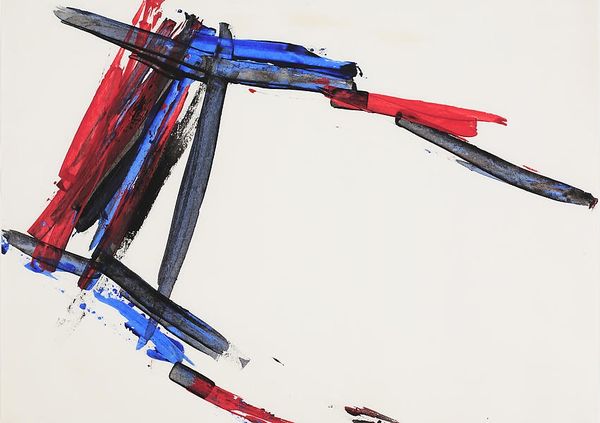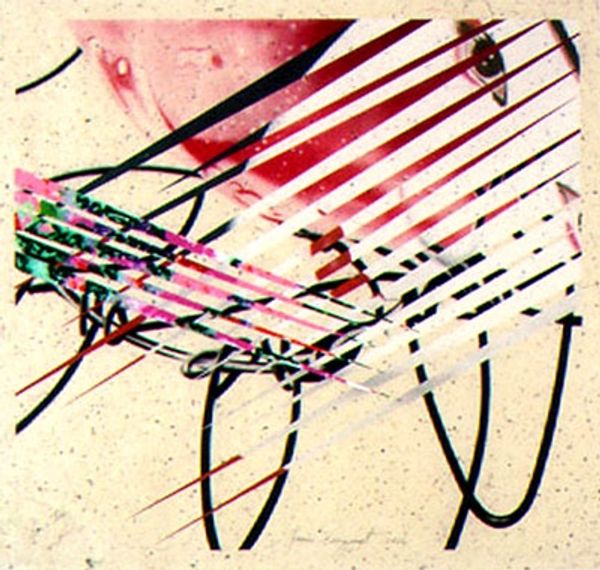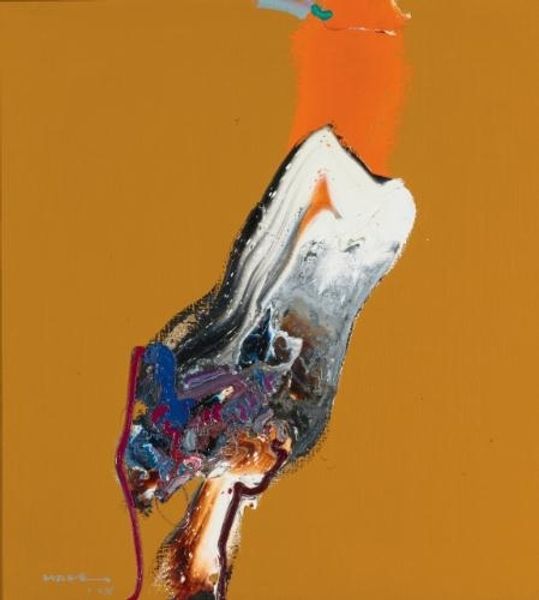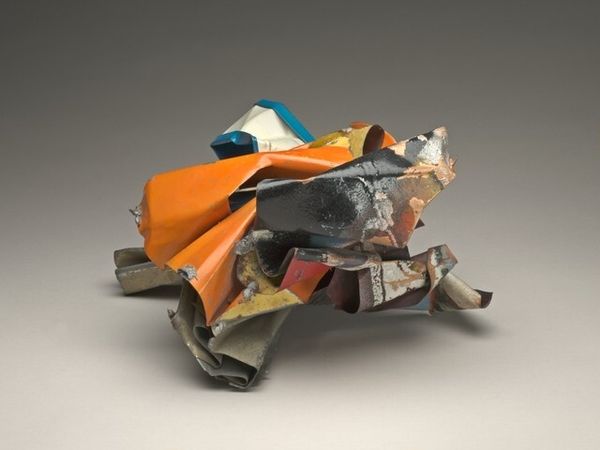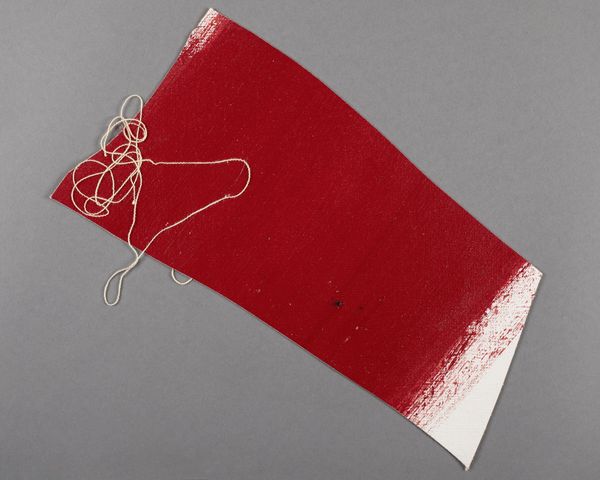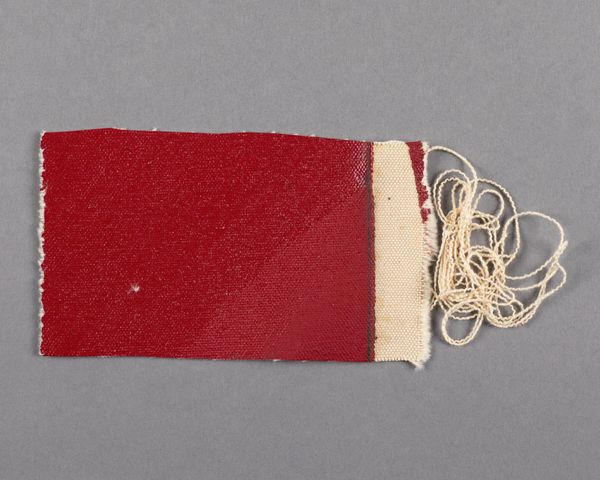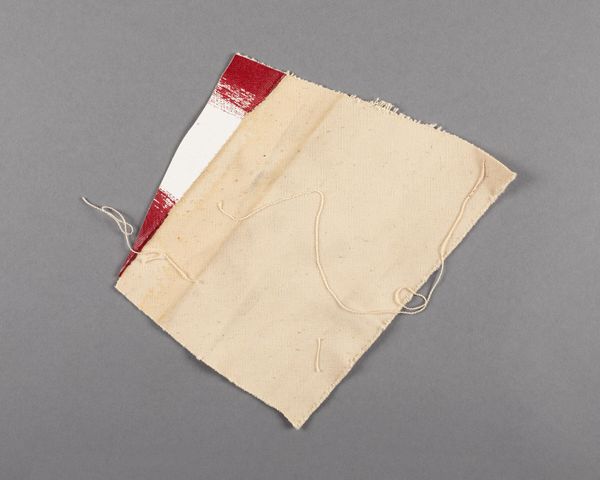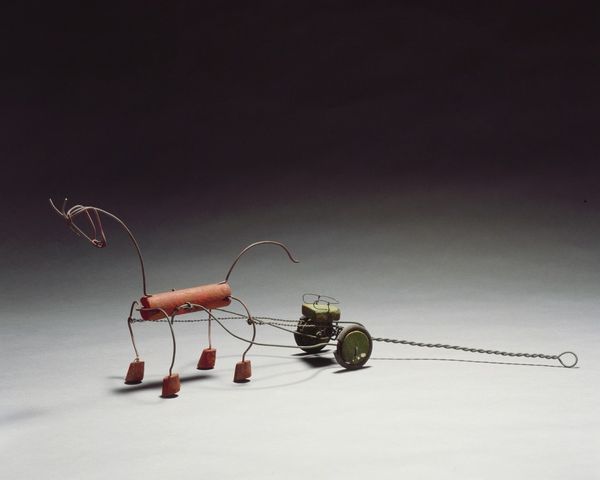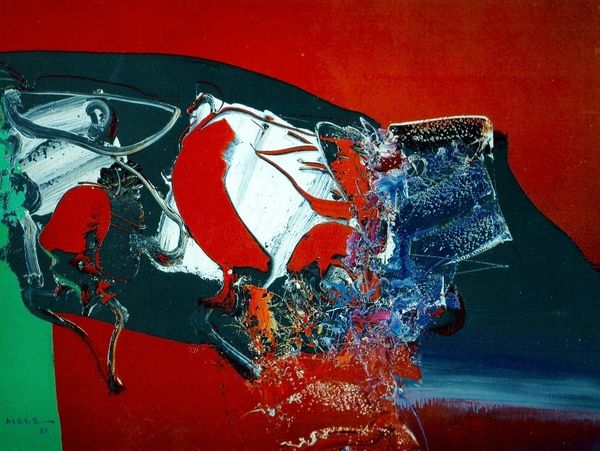
assemblage, found-object, sculpture, mobile
#
abstract-expressionism
#
kinetic-art
#
assemblage
#
found-object
#
sculpture
#
mobile
#
modernism
Copyright: Alexander Calder,Fair Use
Editor: We’re looking at “Only Only Bird” created by Alexander Calder in 1951, a sculpture constructed from found objects. It’s wonderfully playful! What do you make of the sculpture, considering it’s so clearly built from repurposed materials? Curator: Calder’s choice of materials speaks volumes. Found objects carry their own history, their own past lives. By assembling them into the form of a bird, Calder is imbuing the sculpture with layers of symbolic meaning. Consider what the original purpose of these materials was and how they connect to themes like consumption and transformation. Do you think the re-use transforms them? Editor: Absolutely, I think that by giving them another form, they transcend their original intention. But what’s the significance of the bird specifically? Curator: Birds, throughout history, are potent symbols across cultures: freedom, transcendence, communication between worlds. But Calder’s bird isn’t a majestic eagle; it’s quirky and assembled, almost childlike. It’s the idea of a bird, deconstructed and playfully reassembled. Does the sculpture remind you of anything, of some childhood memory, for example? Editor: It reminds me of collages I did when I was a kid, making new things from magazine scraps. It makes it more relatable, more fun, perhaps more democratic in its appeal? Curator: Exactly. Calder democratizes art by using everyday materials, transforming them and, therefore, asking the viewer to reflect on themes of creation, deconstruction, and ultimately the symbols of renewal we continuously find around us, in common and surprising places. Editor: It's amazing how much meaning can be found in something seemingly so simple. Thank you for expanding my perspective! Curator: My pleasure. It's in considering the object and what it reminds us of that we can understand both the world, and ourselves, a little better.
Comments
No comments
Be the first to comment and join the conversation on the ultimate creative platform.



